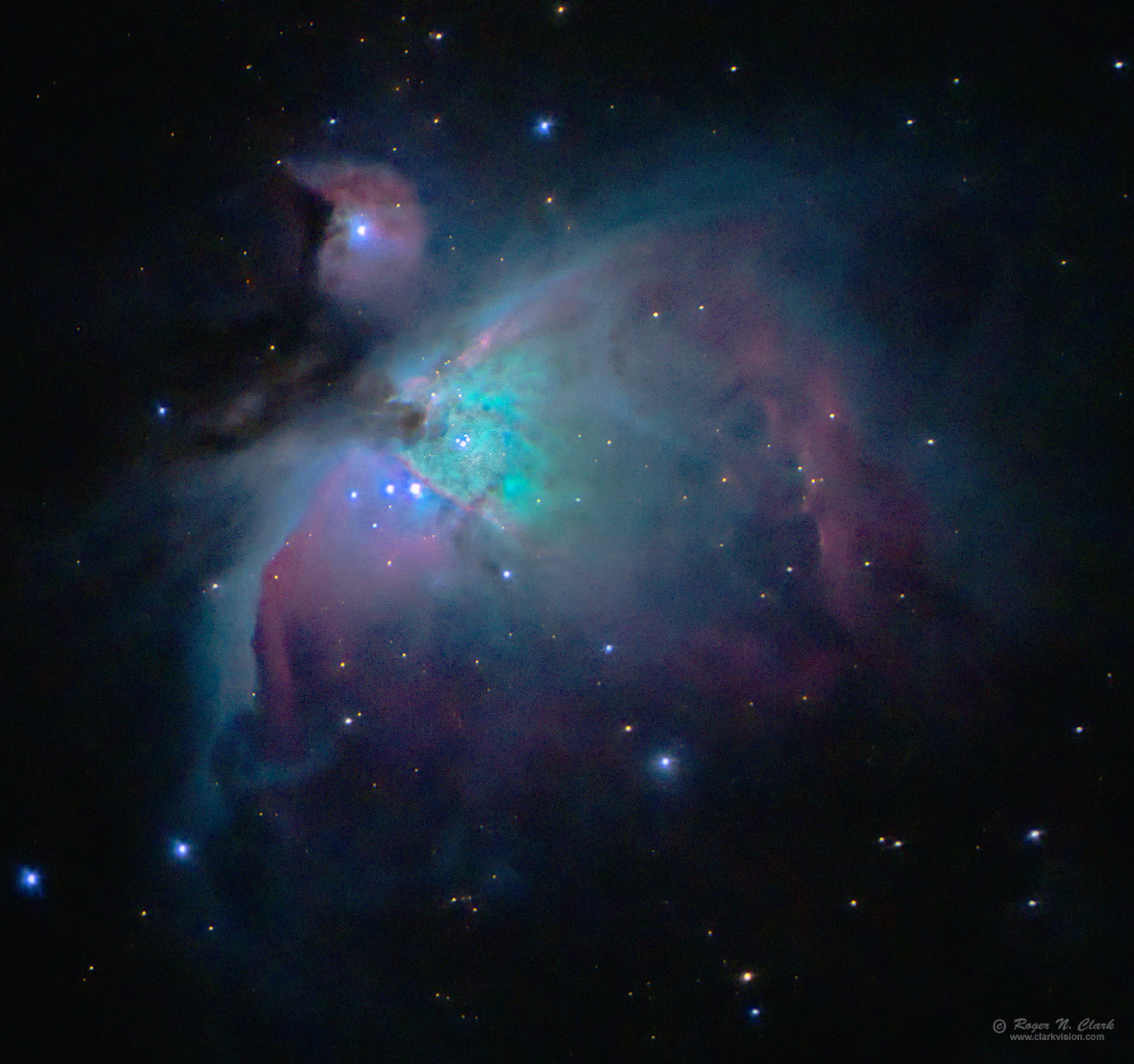| Home | Galleries | Articles | Reviews | Best Gear | New | About | Contact | Gallery Index | Previous |
Next |

| Home | Galleries | Articles | Reviews | Best Gear | New | About | Contact | Gallery Index | Previous |
Next |

The Great Orion Nebula, Messier 42, shows beautiful colors. The green/teal in the center (Trapezium area) is due to oxygen emission. The pink is from hydrogen emission and the blue is reflection from the many blue stars in the area. This area is an intense stellar nursery. These colors can be seen in large amateur telescopes.
Technical. This image was obtained with a stock Canon EOS 90D DSLR Camera and a Canon 300 mm f/2.8 L IS II lens plus a 2x teleconverter. Total exposure time was 20 seconds for the trapezium area (ten 2-second exposures), and 96 seconds for the outer area (six 16 second exposures), 116 seconds total exposure time at ISO 1600, f/5.6, 600 mm focal length. This image was obtained from a very light polluted city, Bortle scale = 8. Raw conversion in rawtherapee to Rec2020 color space. Rawtherapee included lens profiles so the raw converted images are highly calibrated with a flat field (in the lens profile), bias corrected, and the sensor blocked dark current. Stacking in deep sky stacker. Stretched with rnc-color-stretch, and final adjustments in photoshop.a No darks, no flats, no bias frames measured (bias is in the camera EXIF data and a flat field is in the ACR lens profile and corrected during raw conversion). Dark current is suppressed. This is a highly calibrated image with color managed workflow. The exposures were tracked on an iOptron HAE29EC strain-wave mount with high resolution encoders and no guiding. Original plate scale = 1.1 arc-seconds per pixel. The image here is at 1.57 arc-seconds / pixel.
Of course the outer parts of the nebula are noisy because 1) the short, 96 second total exposure time, collected on a small amount of light and 2) these areas were much fainter than the light pollution. More exposure time would be needed to reduce noise in the outer parts of the nebula.
This is a natural color image.
The Exposure Factors, CEF, CEFA are measures of the relative amounts of light received from a subject. It can be used to fairly compare wildly different lens/telescope apertures and exposure times. For this image the, 96 second exposure yielded:
Modern digital cameras like the Canon 90D include on sensor dark current suppression technology and low fixed pattern noise at ISOs around 800 and higher, making no need for dark frame subtraction. Modern raw converters correct for light fall-off and also correct for hot/dead/stuck pixels. This makes processing low light images easy: simply align and average.
Also see Astrophotography Image Processing Basic Work Flow.
To learn how to obtain stunning images like this, please visit my Extensive Articles on Photography .
Keywords to this image = astrophoto-1 Messier nebula low-light digital_astro canon_90d rnc-color-stretch
Image ID: m42-trapezium-rnclark-canon90d-600mm-c02-07-2023-116sec-b8.j-c1-0.7xs.jpg
| Home | Galleries | Articles | Reviews | Best Gear | Science | New | About | Contact |
Last updated November 03, 2025